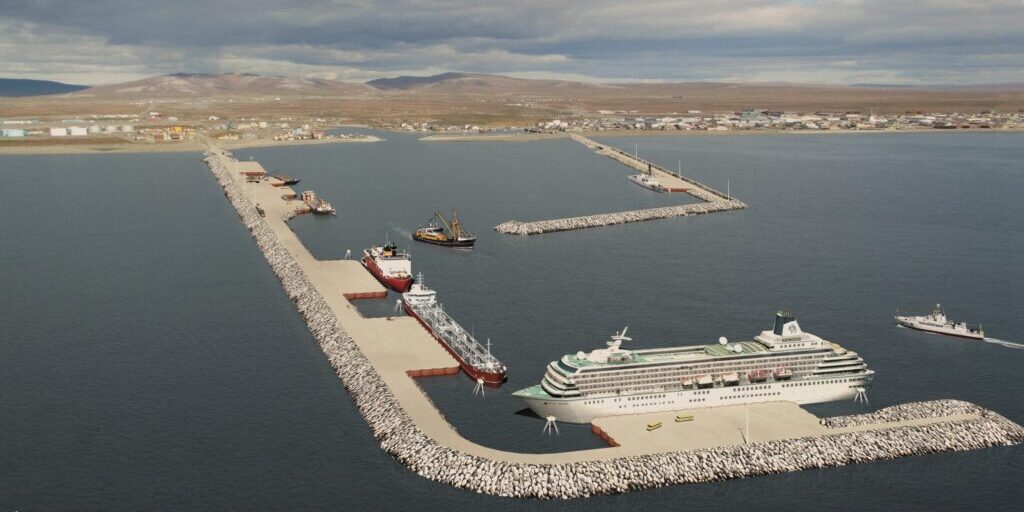An update of the Arctic Deep Draft Port project in Nome was the topic of discussion during a recent Strait Science lecture series, sponsored by the University of Alaska Fairbanks Northwest Campus.
Nome Port Director Joy Baker focused on the project that will deepen and maintain a pair of basins and associated navigation channels.
The deepening of the port will be its first major improvement in many years.
“We’re looking at you know the first upgrade to the port facilities, since they relocated the entrance channel,” Baker said.
Even though Nome has the deepest draft for a regional port in Alaska currently, the deep draft project will make it the deepest in the Arctic.
“We will become the only deepwater port in the Arctic, at minus 40 feet in the deep-water basin,” Baker said. “Right now, we’ve got minus 22. And that is still considered the deepest coastal facility in the region, as most everybody else either has eight feet at the dock, or we’re talking beach access.”
Bringing in more vessels — and larger vessels — are two key factors in pursuing the project, according to Baker.
“We’re expanding to deeper water to capture the larger vessels, as well as expand the docking facilities, so that we can serve as more vessels at once … and actually service vessels on both sides of the harbor, not just to extend the existing causeway,” Baker said. “We will be removing the existing breakwater and removing the stone from the water and rebuilding a causeway that will have two docks on it.”
The project’s 100% design milestone with the U.S. Army Corps of Engineers has been pushed back to May. Baker spoke to areas of responsibility when it comes to different aspects of the project.
“The City of Nome has 100% responsibility of the local service facilities, which are the docks in the roads and the utilities,” Baker said. “We have our own design team working on our facilities. Nome Joint Utility Systems, they’re managing our utilities contractor design firm that is designing all the utilities for the local service facilities.”
The city’s outside engineering firm, PND, will be responsible for a very large portion of the project including the dock design, bridges and roads within the port, according to Baker.
During the question-and-answer portion of the presentation, Nome resident Anna Rose MacArthur asked Baker about cruise ships visiting Nome.
“So, this summer there’s 19 cruise ships,” MacArthur stated. “Six of those are research cruises and they’re all scheduled to arrive on different days except for one day July 30. There’s a cruise ship and a research cruise scheduled, so once the port is fully expanded how many cruise ships would be able to come into port at one time?”
Baker explained that it involves several factors.
“It would depend on the other traffic scheduled for the days that the ships were calling for. That would be based on shoreside capacity to handle the ships. We’ve got the local tour company that can rent the buses and manage the passenger flow, the luggage flow,” Baker said.
A robust and efficient transportation hub at Nome will be essential to the long-term viability of surrounding communities in the region, according to the U.S. Army Corps of Engineers.
Image at top: PND’s updated model rendering for the design of a potential Arctic Deep Draft Port in Nome. Photo from Port of Nome, used with permission (2020).




